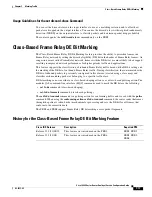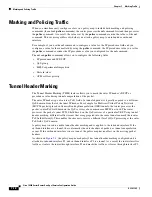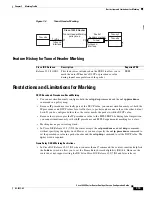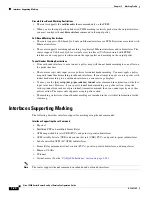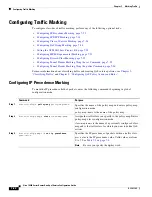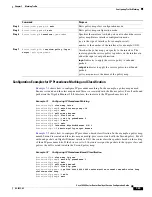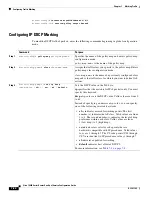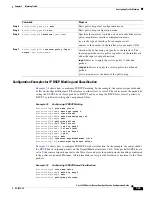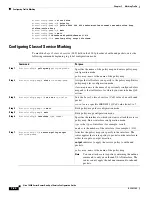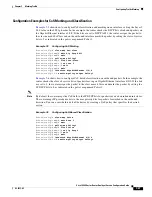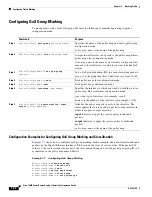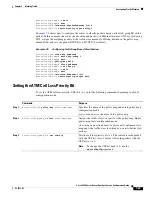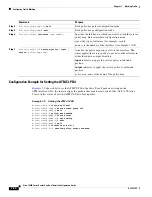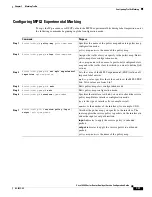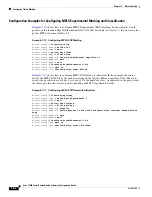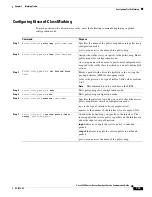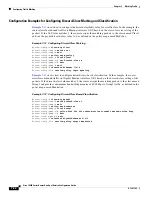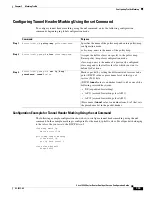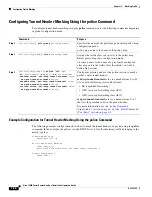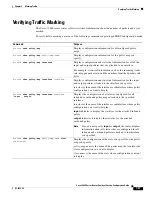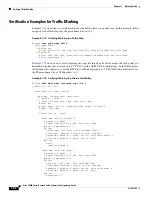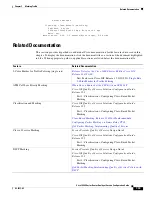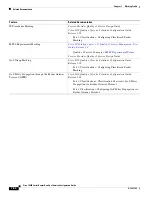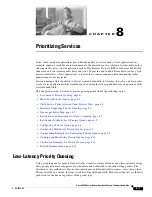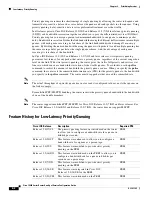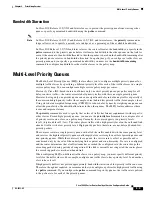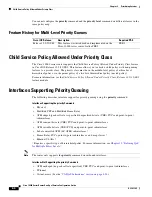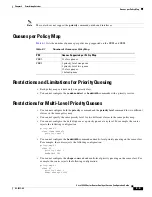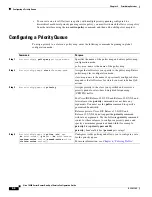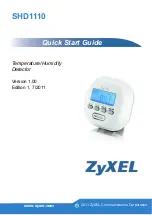
7-31
Cisco 10000 Series Router Quality of Service Configuration Guide
OL-7433-09
Chapter 7 Marking Traffic
Configuring Traffic Marking
Configuring MPLS Experimental Marking
To copy the IP precedence or DSCP value to the MPLS experimental bits during label imposition, enter
the following commands beginning in global configuration mode:
Command
Purpose
Step 1
Router(config)#
policy-map
policy-map-name
Specifies the name of the policy map and enters policy-map
configuration mode.
policy-map-name
is the name of the policy map.
Step 2
Router(config-pmap)#
class
class-map-name
Assigns the traffic class you specify to the policy map. Enters
policy-map class configuration mode.
class-map-name
is the name of a previously configured class
map and is the traffic class for which you want to define QoS
actions.
Step 3
Router(config-pmap-c)#
set mpls experimental
imposition
mpls-exp-value
Sets the value of the MPLS experimental (EXP) field on all
imposed label entries.
mpls-exp-value
specifies the value used to set the MPLS EXP
bits. Valid values are from 0 to 7.
Step 4
Router(config-pmap-c)#
exit
Exits policy-map class configuration mode.
Step 5
Router(config-pmap)#
exit
Exits policy-map configuration mode.
Step 6
Router(config)#
interface
type number
Specifies the interface to which you want to attach the service
policy map. Enters interface configuration mode.
type
is the type of interface (for example, serial).
number
is the number of the interface (for example, 1/0/0).
Step 7
Router(config-if)#
service-policy
{
input
|
output
}
policy-map-name
Attaches the policy map you specify to the interface. The
router applies the service policy to packets on the interface in
either the input or output direction.
input
indicates to apply the service policy to inbound
packets.
output
indicates to apply the service policy to outbound
packets.
policy-map-name
is the name of the policy map.

